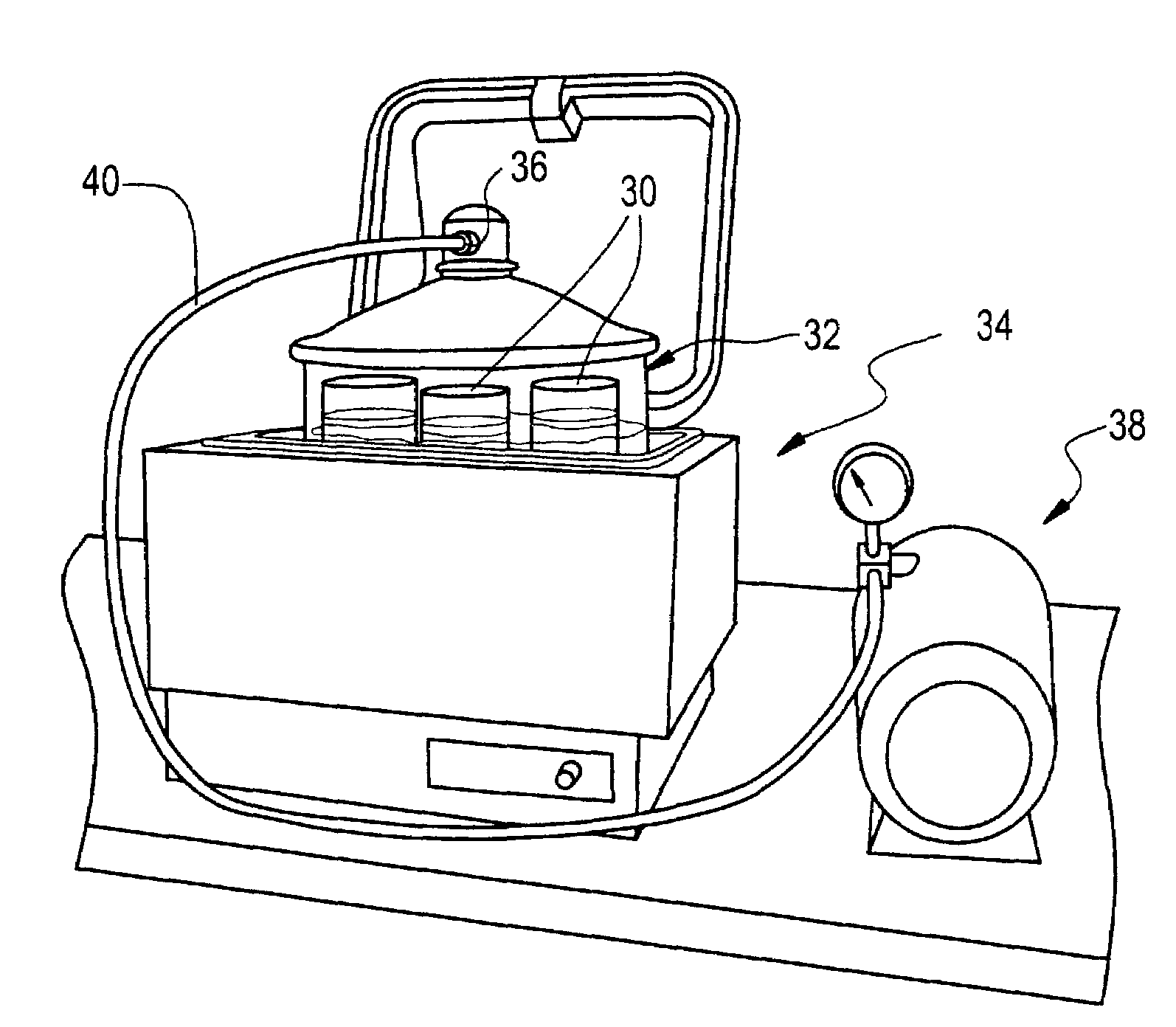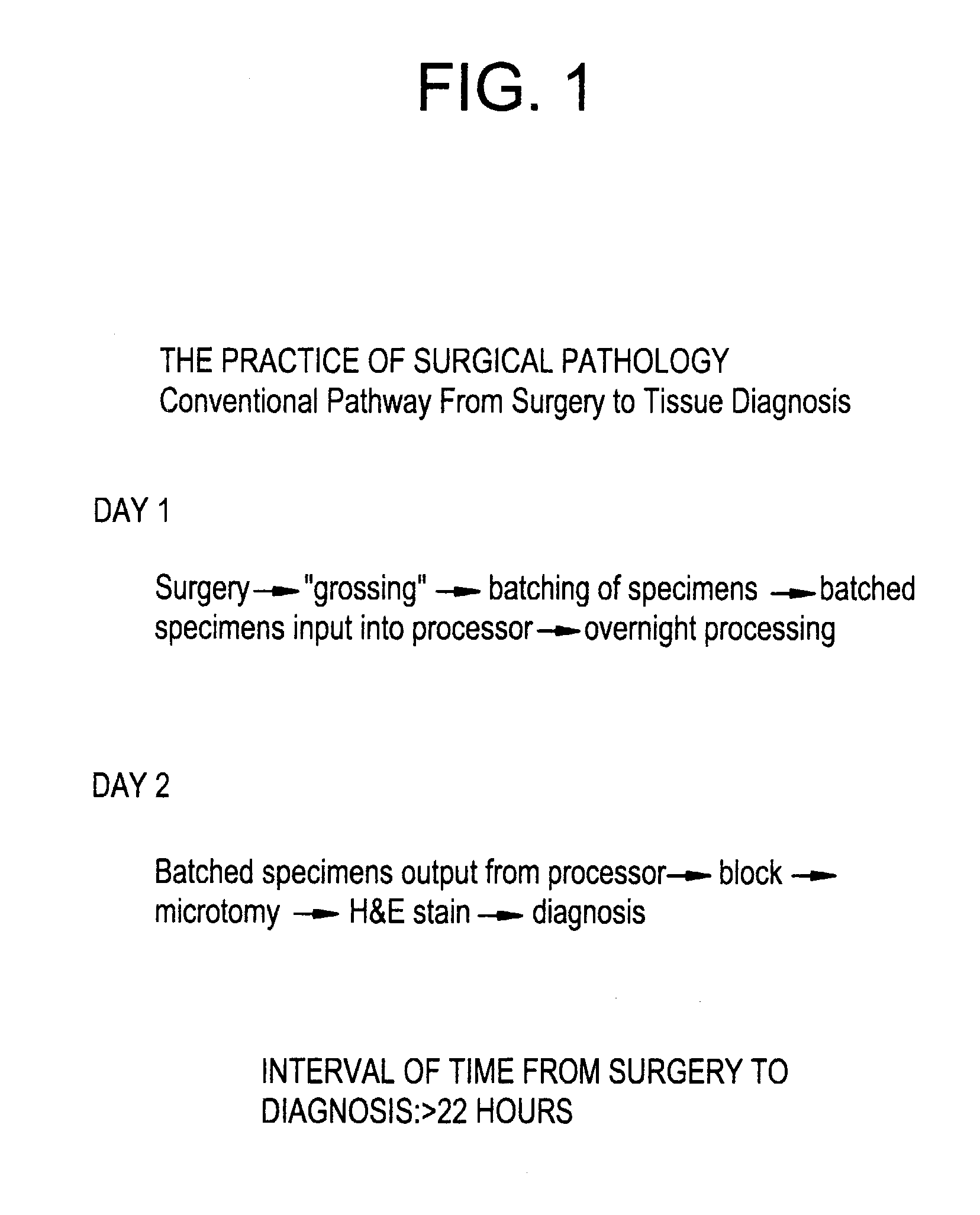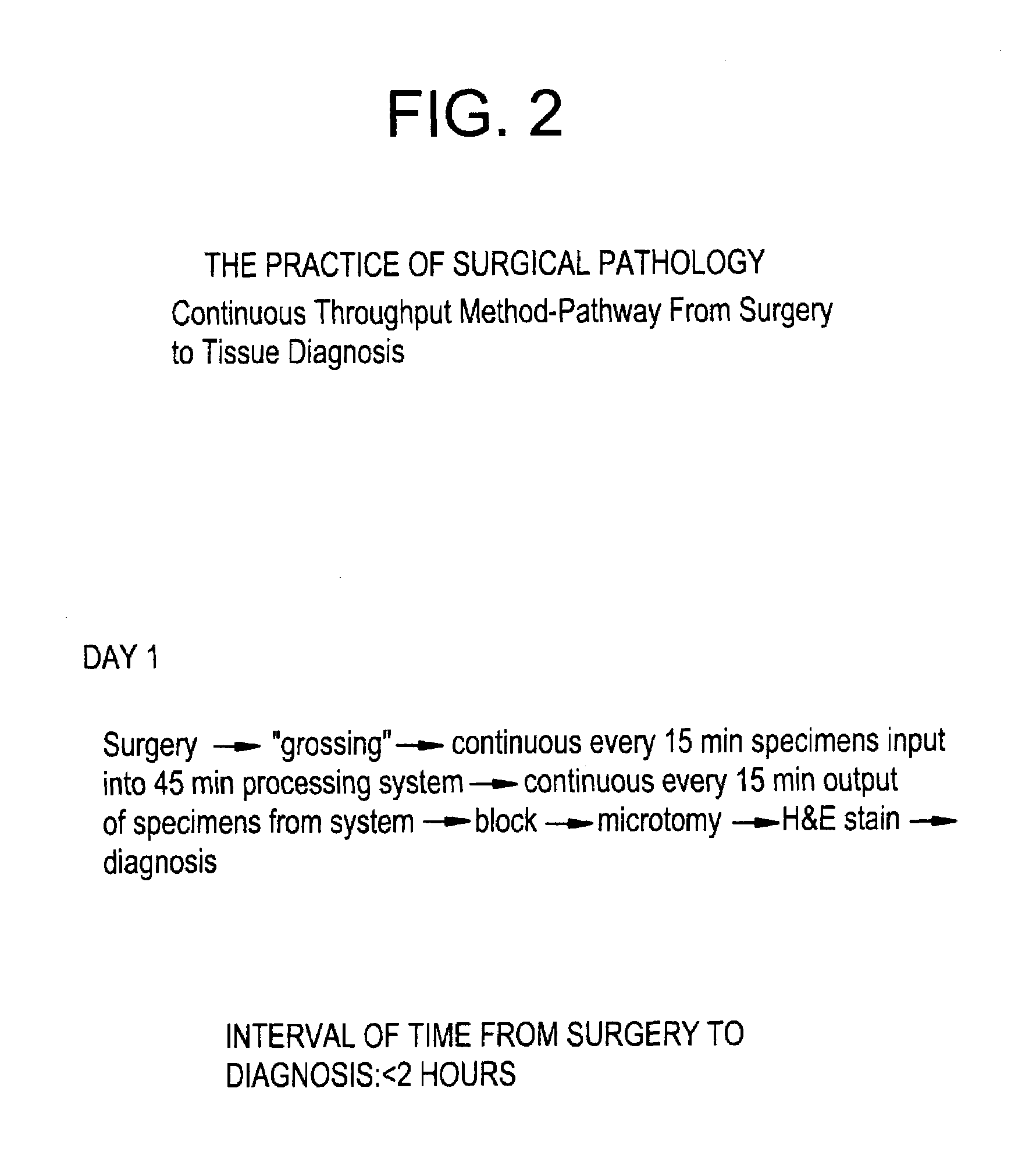High quality, continuous throughput, tissue processing
a tissue and high-quality technology, applied in the field of tissue processing for microscopic examination, can solve the problems of reducing the number of personnel required, reducing the size of the laboratory facility, reducing the volume of reagents used, and reducing the time required
- Summary
- Abstract
- Description
- Claims
- Application Information
AI Technical Summary
Benefits of technology
Problems solved by technology
Method used
Image
Examples
example 1
[0100]Two mm thick or thinner slices of fresh or previously fixed tissue were held in tissue cassettes and placed in a non-aqueous first solution of:
[0102]40% acetone,
[0103]20% polyethylene glycol (average molecular weight 300), and
[0104]1% dimethyl sulfoxide (DMSO) (i.e., 10 ml per liter of the above mixture).
[0105]Tissues samples were incubated for 15 min at a glycerin bath temperature between 45° C. and 50° C. The 400 ml solution for fixation was placed in a 500 ml beaker in a water bath shaker (linear displacement of 5 cm / sec). Additional agitation of the fixation solution was provided by bubbling with an air pump.
[0106]Fixation, dehydration, fat removal, clearing, and impregnation are accomplished by sequential exposure of the tissue specimen to three different solutions (the second, third and fourth solutions described above), one in each of three microwave ovens from Energy Beam Sciences. A one liter solution of 70% isopropyl alcohol and 30% polyet...
example 2
[0108]Fixation, dehydration, fat removal, and paraffin impregnation of fresh or fixed tissue sections, approximately 1 mm thick, was accomplished in 40 minutes by exposing these tissue sections to four successive steps as follows.
Step 1.
[0109]In this example, the first solution consisted of:
[0111]10% acetone,
[0112]30% polyethylene glycol (average molecular weight 300), and
[0113]dimethyl sulfoxide (DMSO) added at an approximate concentration of 1% of the total volume. One liter of this solution suffices to fix 60 samples of tissue held in tissue cassettes. The samples were incubated at 55° C. in a commercial tissue microwave processor (H2500 or H2800, Energy Beam Sciences) for 5 min each in a series of three baths containing the first solution (15 min total incubation); agitation of the solution was obtained by bubbling to accelerate solution exchange.
Step 2.
[0114]The samples were incubated in a solution of 70% isopropyl alcohol, 30% acetone, and DMSO adde...
example 3
[0118]Fixation, dehydration, fat removal, and paraffin impregnation of fresh or fixed tissue sections, up to about 1 to 2 mm thick, may be accomplished in 65 minutes as follows.
Step 1.
[0119]In this example, the first solution consists of:
[0120]40% isopropyl alcohol,
[0121]40% acetone,
[0122]20% polyethylene glycol (average molecular weight 300),
[0123]glacial acetic acid added at an approximate concentration of 0.5% of the total volume, and
[0124]dimethyl sulfoxide (DMSO) added at an approximate concentration of 1% of the total volume. One liter of this solution suffices to fix 60 samples of tissue held in tissue cassettes. The samples are incubated at 65° C. in a commercial tissue microwave processor (H2500 or H2800, Energy Beam Sciences) for 15 min in a 1500 ml beaker containing the first solution; agitation of the solution is obtained by bubbling to accelerate solution exchange.
Step 2.
[0125]The samples are incubated in a solution of 55% isopropyl alcohol, 25% acetone, 10% polyethylen...
PUM
| Property | Measurement | Unit |
|---|---|---|
| total time | aaaaa | aaaaa |
| time | aaaaa | aaaaa |
| time | aaaaa | aaaaa |
Abstract
Description
Claims
Application Information
 Login to View More
Login to View More - R&D
- Intellectual Property
- Life Sciences
- Materials
- Tech Scout
- Unparalleled Data Quality
- Higher Quality Content
- 60% Fewer Hallucinations
Browse by: Latest US Patents, China's latest patents, Technical Efficacy Thesaurus, Application Domain, Technology Topic, Popular Technical Reports.
© 2025 PatSnap. All rights reserved.Legal|Privacy policy|Modern Slavery Act Transparency Statement|Sitemap|About US| Contact US: help@patsnap.com



